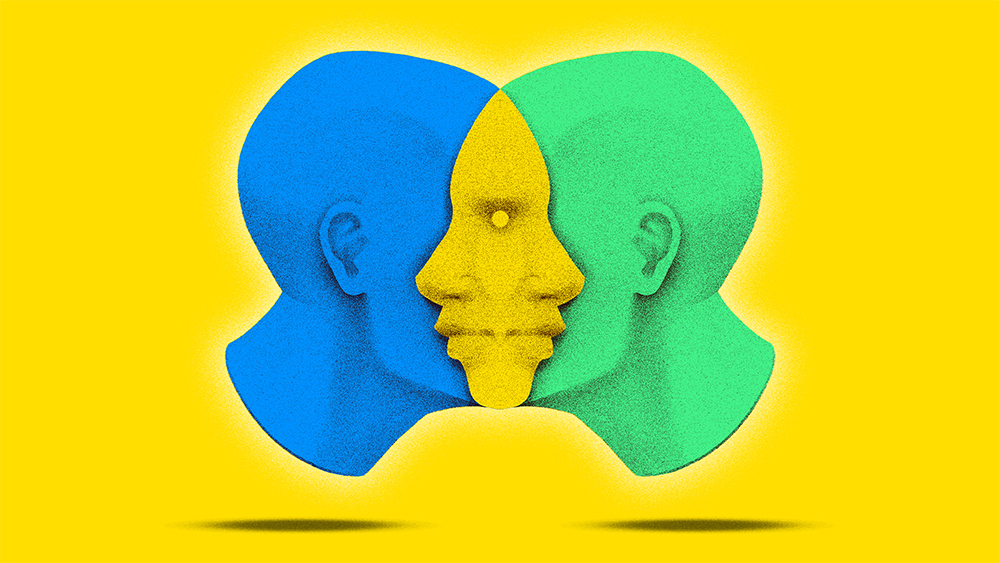B2b or b2c, selling is always h2h – human to human
14.1 minutes

Luca D’Urbino
There are very good reasons why we divide the sales industry into b2b versus b2c, and why we invest billions of dollars into sales technology every year. But in our rush to divide and invest, we often overlook a critical truth about our work:
Sales always involves at least one human on each side of every transaction.
And humans are complicated. We are not the logical, straightforward thinkers we often imagine ourselves to be. We have emotions – in fact, we need emotions in order to make decisions. We suffer from cognitive biases, we’re influenced by unconscious assumptions, and we are easily distracted.
When we as leaders forget the human element, we fall into the trap of investing in systems and processes that serve themselves, at the expense of serving customers and sales teams. Studying and understanding the human element is the key to keeping our organizations, our teams, and our customers healthy and thriving.
3 human factors that impact sales systems
Psychologists and other scientists and researchers have been studying the human mind since ancient times. One thing that all this research shows us time and time again is that up to 95% of our behavior is driven by feelings, memories, and processes that take place below the level of our consciousness.
This means that no matter how logical and organized we think that we are, in the end, most of our decision-making is happening without our conscious awareness. This has profound implications for the field of sales and helps to explain why sometimes, no matter how many systems we implement and how much training we invest in, our salespeople can’t seem to break loose of established patterns of performance.
But when we make these unconscious assumptions, beliefs, feelings, and processes conscious – then we can enjoy breakthrough outcomes based in the human factors we usually ignore. So let’s dive in.
In this piece, we’ll explore three major categories of human factors that impact sales:
- Bad assumptions
- Limiting beliefs
- Cognitive biases
Bad assumptions
Almost all sales organizations are operating on at least a few bad assumptions. Assumptions are as human as it gets. We use assumptions to save time and to limit the amount of hard thinking we have to do. Often, assumptions are valuable tools for getting through the day.
But sometimes those assumptions don’t serve us. Here are three that cause harm to the sales organization:
1. Salespeople are born, not made
2. People can and should exercise self-discipline
3. Salespeople and buyers are logical creatures
1. The assumption that salespeople are “born, not made” has far-reaching consequences for sales organizations. Even if you think you know that salespeople must be trained and coached, you probably still fall prey to the assumption in ways that you don’t realize. This can show up as:
- Excessive salesperson turnover due to a sink-or-swim approach
- Missed forecasts because you’re relying on the talent of your team to deliver results
- “Brain drain” due to star salespeople leaving and taking their know-how with them
- Long ramp-up times and fast turn-over of new hires
In an organization that deeply understands that salespeople need training, support, reinforcement, coaching, and nurture, the picture is very different. Turnover drops, ramp-up times speed up, forecasts become reliable, and institutional knowledge is retained, expanded, and scaled.
2. The assumption that people can and should exercise self-discipline leads to a great deal of frustration. Sales executives develop a vision, sales leaders communicate the vision to salespeople, trainers are brought in, systems are designed, everyone gets excited.
And four weeks into implementation, user adoption falls through the floor and nothing ever really happens. Sales managers get frustrated, executives demand an accounting, and nobody is happy.
The truth is – humans are by nature NOT self-disciplined. This isn’t an individual failing on the part of your salespeople or coaches. It’s simply a matter of fact. The rare exception only proves the point.
In fact, even the world’s “most disciplined” people are not as disciplined as we like to think.
For instance, surgeons must dedicate themselves to decades of education, training, internship, and practice before they are allowed to operate on a patient.
Yet, an 8-year Johns Hopkins patient safety study determined that 250,000 U.S. deaths per year are due to medical error, also known as iatrogenic injuries, making it the third leading cause of death after heart disease and cancer.
From failing to properly drape a patient for IV insertion, to inadequate pre-surgical hygiene, iatrogenic injury highlights that even surgeons aren’t as disciplined as they “should” be.
Surgeons, like salespeople and buyers, are human. And humans can only sustain self-discipline and willpower for a limited time before our brains simply won’t do it anymore. It takes effort to be self-disciplined.
It turns out that there are solutions for this. Pilots and surgeons, people on whom lives depend, have learned to work with human nature instead of against, as I’ll show in the final section.
3. The assumption that salespeople and buyers are logical creatures leads us down the path of bad sales tactics, as well as bad management and bad planning. But is it true? Or, at least, *can* buyers and sellers make logical decisions?
In his groundbreaking work, Thinking, Fast and Slow, author Daniel Kahneman explains that logic is much harder work than we realize. And, because it is such hard work and we are not as disciplined as we think we are, humans don’t often engage in true rational thinking.
Instead, he says, we rely on a series of thinking shortcuts to get us through the day, while reserving our true logical thinking for high-priority activities and important decisions. This is practical and good when it helps us, for instance, pack our lunch and drive our car without thinking through every step of each process.
But sometimes it misfires. In fact, our brains are loaded with pre-wired processes that undermine logical decision-making by making us think that we’re being logical when we’re actually employing cognitive shortcuts – what are commonly called cognitive biases.
Some of the cognitive biases that impact sales extensively include:
- Confirmation bias
- Anchoring bias
- Sunk cost bias
- Bandwagon effect
- IKEA effect
It’s outside the scope of this piece to explore each one in detail, but I encourage readers to look into this list as a place to start. And these are only the tip of the iceberg – there are literally hundreds of biases that impact decision-making daily, both at the seller level and the buyer level. And executives are not immune.
To make matters even more complicated, it turns out that in the end, not only do we not make decisions logically much of the time. We are actually not capable of making decisions based on logic alone. The work of neuroscientist Antonio Damasio showed that when the brain’s emotion centers are cut off from the decision-making centers, the afflicted person becomes completely incapable of making decisions at all, no matter how intelligent and logical a thinker the person is.
It turns out that our logical brains can support decision-making by laying out plans and processes and data, but in the end, if we don’t feel that one decision or another is right, we won’t, and can’t, make the decision.
So what are we to do about the humans?
Smart executives understand that their business will never be free from the complications and weaknesses of human nature. And instead of trying to suppress it or pretend it doesn’t exist, they learn to work with, instead of against, human nature.
Five key tools of effective human leadership are:
- Processes
- Checklists
- Enablement
- Coaching
- Supportive technology
Remember that even surgeons lack sufficient self-discipline and willpower to avoid making life-threatening mistakes. Atul Gawande, author of The Checklist Manifesto and a world-renowned surgeon, sought to fix this problem by recognizing the humanity of surgeons and addressing the problem systematically.
He looked to the airline industry, where human error had been reduced so significantly that airline accidents are exceedingly rare. He found that the key to reducing human error is to develop processes and associate checklists with each one, then to empower every human on the team to enforce the checklists.
In surgical units where Gawande’s checklists were implemented, preventable death rates plummeted by 47 percent. The technique spread to other medical teams and other hospitals, with similarly outstanding results.
Sales organizations can benefit from the same approach to reduce human error on the sales teams. They can also improve ramp-up times, training effectiveness, and increase the value of enablement content and coaching.
Effective processes with checklists have the potential to augment human intelligence by holding humans to the logical process while leaving room for human genius to play the roles that process can’t.
In order to gain these benefits, organizational leadership must also account for the human factors on the customer side. By understanding how humans make decisions and how we are influenced by unconscious factors, executives can develop strategies and approaches that become processes and systems that work for humans.
Finally, make the technology the servant, not the master
In many sales organizations, technology becomes an end rather than a means. We invest in the sales stack, at first as a tool, but eventually it becomes so top-heavy and complex that it feels more like a burden.
We expect salespeople to be self-disciplined and logical, asking them to switch among multiple apps and perform searches to find the “right” content that they need. We want them to do this while maintaining a steady pace and doing all the “right” tasks at the “right” times – and then recording all of it at the end of the day so we can analyze and optimize.
Most sales technology is designed to solve problems for management – instead of being designed to solve problems for salespeople.
This is a problem because salespeople are human, and they simply aren’t going to consistently do the right thing if the wrong thing is easier.
Instead, as leaders it’s our job to invest in technology that is designed to serve our people, rather than forcing our people to serve the technology.
The right technology will provide easy, pleasant workflows that guide salespeople through their day and serve them the information, training, and content they need when they need it. Instead of doing their jobs for them, it will become their steady companion, performing repetitive tasks on their behalf, remind them and hold them accountable to routine items they have to do themselves, and freeing them to perform the rest of their jobs with creativity and ease.
It should incorporate checklists as well as enablement content, and it should provide elegant analytics for leadership.
A lot of technology problems can be solved by starting with the human component and designing the technology system around the needs and realities of the human factor.
In conclusion
While the industry constantly changes around us, one thing will never change: All sales are human to human. When executives recognize and embrace this reality, they empower themselves to achieve breakthrough results for their organizations.
